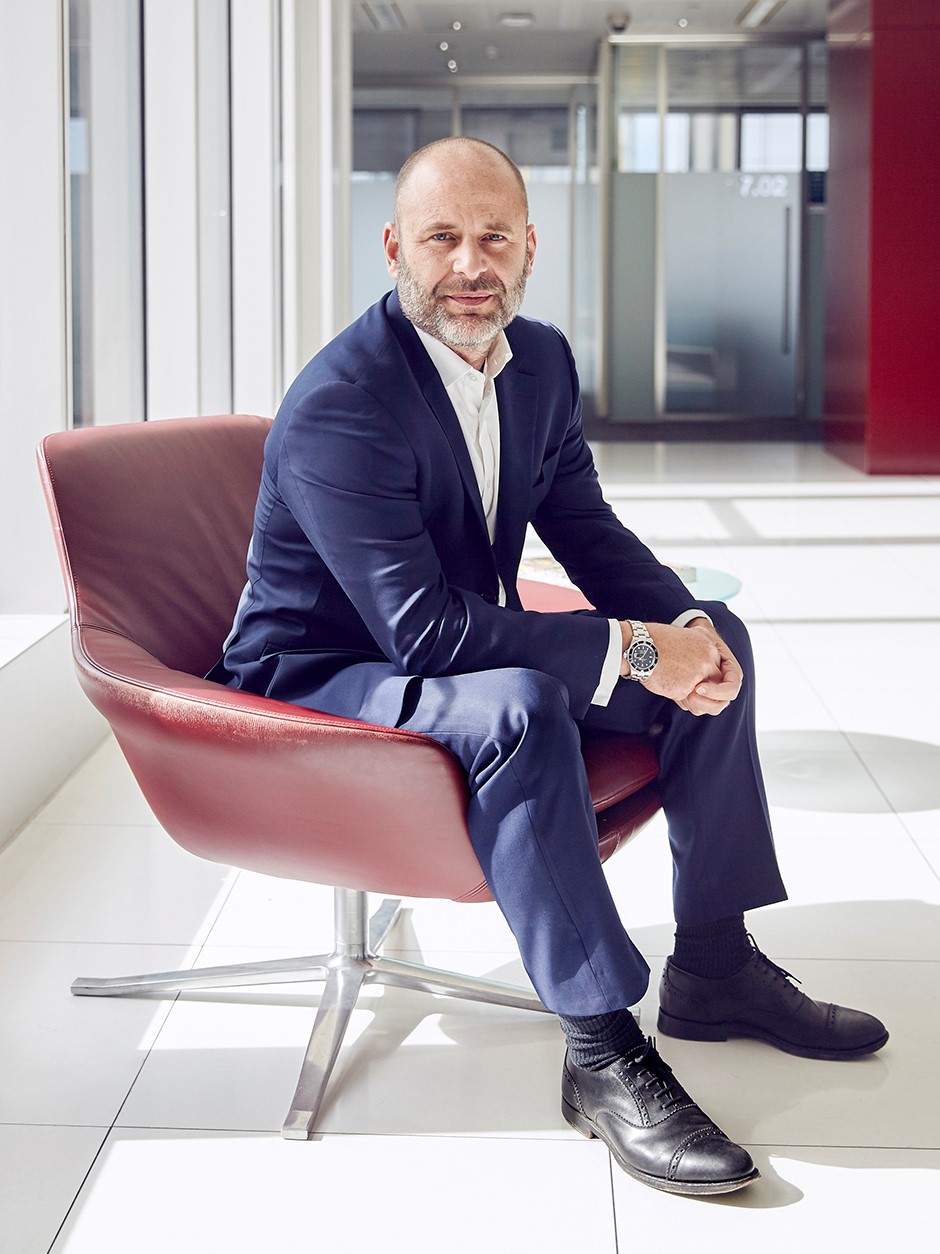BNP Paribas’ UK property chief on the impact of the pandemic

In his first interview since taking up the role of UK CEO of BNP Paribas Real Estate in July, Etienne Prongué sat down with City A.M.’s Michiel Willems to discuss the unprecedented beating the City’s property investment space received since the start of the pandemic, with transaction and fundraising levels remaining suppressed.
But despite the dire market conditions, Prongué does spot opportunities, with trends like digitisation and homeworking accelerating as never before, and a shortage of rental accommodation in London not diminishing anytime soon.
How do you sell or even showcase a property when everyone is forced to stay at home?
Ha! As a business, we were an early adopter of virtual viewings, both in the residential and commercial arms of the business. This allowed us to continue to showcase properties during lockdown and virtual viewing technology will continue to be instrumental. The technology will never replace physical viewings but it helps the decision making process.
Are we seeing a real step change here? The real estate space has been one of the slowest sectors to adopt technology.
This is changing fast. There is no longer an option to not take tech seriously; it needs to be a top priority for any business.
In terms of fundraising, the pandemic has turned the entire investment climate upside down. How difficult is it currently to raise fresh funds from, let’s say, large institutional investors and pension funds?
Fundraising has obviously been hit hard by the pandemic. However, more than one in five funds closed by the end of the third quarter managed to secure greater than 125% of their initial target. This suggests that investors remain keen to allocate funds to real estate and strategies targeting resilient geographies and sectors. We have seen a number of funds, particularly those with a focus on logistics and residential, exceed targets at final close, with backing from institutional investors and pension funds.
“Volatile equity markets and lack of yield elsewhere has kept levels of dry powder targeting real estate high on historic levels.”
Etienne Prongué
So despite offices being empty, people losing their jobs and the economy in disarray, you are still seeing growth?
Unsurprisingly, transaction levels remain suppressed compared to recent years. However, investor appetite remains for a number of sectors seen as defensive or beneficiaries of accelerated demographic trends. Demand for logistic and industrial assets continues to build, fueled by high online retail sales and record levels of warehouse take-up, meaning the sector is forecasted to outperform the market in terms of rental growth for the medium-term. Build-to-rent is widely seen as resilient; there is still a huge shortage of rental accommodation.
And let’s zoom in on London.
The global flight to “risk-free” income is driving allocations to core markets like Central London. We have seen a number of high-profile transactions since the summer in London, which demonstrates a recovery in the market since the lockdown. Demand from international investors is still present, particularly for prime assets and where there are opportunities to add value.
The capital remains attractive to global investors, particularly those based in Asia-Pacific and Europe, who together have accounted for approximately 44% of all investment turnover in Central London so far this year, up from 27% in the same period last year.
We recently advised Luxembourg-based REInvest on the acquisition of 30 Lombard Street. REInvest sees London as a robust market, offering good investment opportunities and very attractive purchase yields.

Indeed, here in London, Brexit uncertainties have taken us on a slightly different economic path to the rest of Europe. This has contributed to prime office yields remaining static at 3.50-4.00%, while core European markets have seen yield compression to sub-3% in places. This makes the capital look like an increasingly attractive investment opportunity.
Sure but a recession is looming, a hard Brexit may be on the cards, the pandemic is far from over: would you still invest in shopping malls, gyms and retail outlets across the UK, currently?
Retail is going through a rapid transformation and the pandemic has accelerated pre-COVID-19 trends. E-commerce is certainly here to stay as purchases are increasingly made online, but the physical store has an important role to play. Shopping centres and outlets still offer opportunities for investors as prices have been massively reduced (up to 40 percent on some schemes) and these assets are now starting to show good value. Yields on retail schemes can also be very attractive and offer better value compared to some office buildings.
“Volatile equity markets and lack of yield elsewhere has kept levels of dry powder targeting real estate high on historic levels.”
Etienne Prongué
Social interaction is in our nature and people still want to meet. Once the restrictions eventually ease, we expect to see increased focus on the shopping experience and environment to bring consumers back. Growing demand for ‘click-and-collect’ will also help to drive footfall to stores.
Finally, earlier you mentioned logistics and industrial properties, they seem to be going from strength to strength: have we reached the peak yet?
While the online penetration rate has eased as shops re-opened, online sales are still 47% higher than pre-pandemic levels at the start of the year. It is also important to highlight that e-commerce businesses generally require much more physical space, three times more in fact. As businesses look to invest in their supply chains to make them more resilient in light of the pandemic, combined with the ongoing shift to online shopping, we expect demand for warehouse space to remain solid going forward.